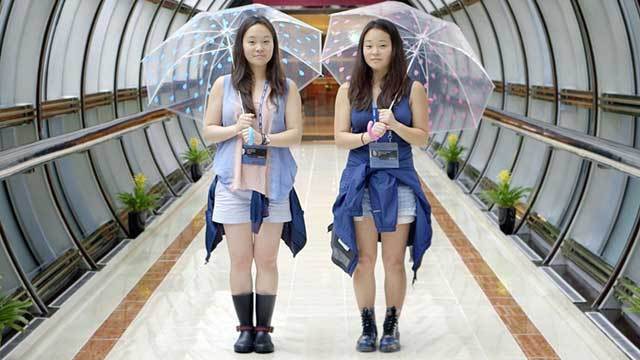How UberŌĆÖs Autonomous Cars Will Destroy 10 Million Jobs and Reshape the Economy by 2025
Jay Liew stashed this in Autonomous Vehicles
Stashed in: Awesome, Uber, Self-driving Cars, Cars, Robot Jobs
The transition is already beginning to happen.┬Ā
Elon Musk, Tesla MotorŌĆÖs CEO, says that their 2015 models will be able to self-drive 90 percent of the time.1┬ĀAnd the major automakers arenŌĆÖt far behind ŌĆō according to Bloomberg News, GMŌĆÖs 2017 models will feature ŌĆ£technology that takes control of steering, acceleration and braking at highway speeds of 70 miles per hour or in stop-and-go congested traffic.ŌĆØ2┬ĀBoth Google3┬Āand Tesla4┬Āpredict that fully-autonomous cars ŌĆō what Musk describes as ŌĆ£true autonomous driving where you could literally get in the car, go to sleep and wake up at your destinationŌĆØ ŌĆō will be available to the public by 2020.
How it┬Āwill unfold:
Industry experts think that consumers will be slow to purchase autonomous cars ŌĆō while this may be true, it is a mistake to assume that this will impede the transition. Morgan StanleyŌĆÖs research shows that cars are driven just 4% of the time,5┬Āwhich is an astonishing waste considering that the average cost of car ownership is nearly $9,000 per year.6┬ĀNext to a house, an automobile is the second most expensive asset that most people will ever buy ŌĆō it is no surprise that ride sharing services like Uber and car sharing services like Zipcar are quickly gaining popularity as an alternative to car ownership. It is now more economical to use a ride sharing service if you live in a city and drive less than 10,000 miles per year.7┬ĀThe impact on private car ownership is enormous: a UC-Berkeley study showed that vehicle ownership among car sharing users was cut in half.8┬ĀThe car purchasers of the future will not be you and me ŌĆō cars will be purchased and operated by ride sharing and car sharing companies.
And current research confirms that we would be eager to use autonomous cars if they were available. A full 60% of US adults surveyed stated that they would ride in an autonomous car9┬Ā, and nearly 32% said they would not continue to drive once an autonomous car was available instead.10┬Ā But no one is more excited than Uber ŌĆō drivers take home at least 75% of every fare.11┬ĀIt came as no surprise when CEO Travis Kalanick recently stated that Uber┬Āwill eventually replace all of its drivers with self-driving cars.12
A Columbia University study suggested that with a fleet of just 9,000 autonomous cars, Uber could replace every taxi cab in New York City13┬ĀŌĆō passengers would wait an average of 36 seconds for a ride that costs about $0.50 per mile.14┬ĀSuch convenience and low cost will make car ownership inconceivable, and autonomous, on-demand taxis ŌĆō the ŌĆśtransportation cloudŌĆÖ ŌĆō will quickly become dominant form of transportation ŌĆō displacing far more than just car ownership, it will take the majority of users away from public transportation as well. With their $41 billion valuation,15┬Āreplacing all 171,000 taxis16┬Ā┬Āin the United States is well within the realm of feasibility ŌĆō at a cost of $25,000 per car, the rollout would cost a mere $4.3 billion.
The effects of the autonomous car movement will be staggering. PricewaterhouseCoopers predicts that the number of vehicles on the road will be reduced by 99%, estimating that the fleet will fall from 245 million to just 2.4 million vehicles.17
A view of the future:
Morgan Stanley estimates that a 90% reduction in crashes would save nearly 30,000 lives and prevent 2.12 million injuries annually.23┬ĀDriverless cars do not need to park ŌĆō vehicles cruising the street looking for parking spots account for an astounding 30% of city traffic,24┬Ānot to mention that eliminating curbside parking adds two extra lanes of capacity to many city streets. Traffic will become nonexistent, saving each US commuter 38 hours every year ŌĆō nearly a full work week.25┬ĀAs parking lots and garages, car dealerships, and bus stations become obsolete, tens of millions of square feet of available prime real estate will spur explosive metropolitan development.
The environmental impact of autonomous cars has the potential to reverse the trend of global warming and drastically reduce our dependence on fossil fuels. Passenger cars, SUVs, pickup trucks, and minivans account for 17.6% of greenhouse gas emissions26┬ĀŌĆō a 90% reduction of vehicles in operation would reduce our overall emissions by 15.9%. As most autonomous cars are likely to be electric, we would virtually eliminate the 134 billion of gasoline used each year in the US alone.27┬ĀAnd while recycling 242 million vehicles will certainly require substantial resources, the surplus of raw materials will decrease the need for mining.
But perhaps most exciting for me are the coming inventions, discoveries, and creation of entire new industries that we cannot yet imagine.
I dream of the transportation cloud: near-instantly available, point-to-point travel. Ambulances that arrive to the scene within seconds. A┬Āvehicle-to-grid distributed power system.┬ĀA merging of city and suburb as commuting becomes fast and painless. Dramatically improved mobility for the disabled. On-demand rental of nearly anything you can imagine. The end of the DMV!











11:41 AM Nov 01 2015